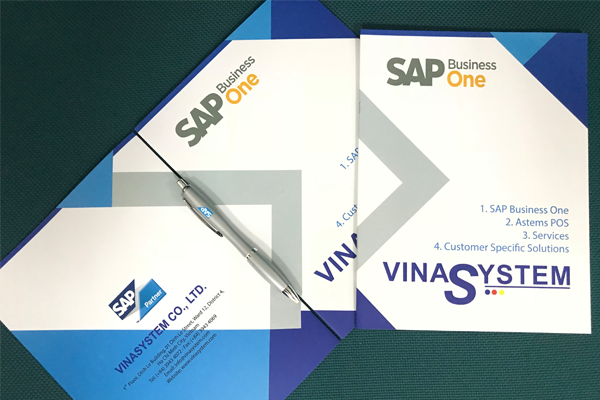
Post a Journal Entry in SAP Business One
Welcome to the topic on posting a journal entry.
I/ Objectives
In this course, we discuss the ways to post journal entries in SAP Business One: entering a manual journal entry, creating a journal entry from a journal voucher, using a posting template and setting up recurring postings.
II/ Business Scenario
Imagine that you are implementing SAP Business One at a new customer.
The company accountant asks how she can record business transactions that do not have a document in SAP Business One.
You list the options available for entering manual journal entries and ask which type of transactions she is looking for.
She states that for very small expenses she prefers using manual journal entries rather than using the A/P invoice and the Outgoing Payment documents.
She also tells you about rent payments that the company pays on a monthly basis.
In addition, she says that at the end of the year she records the annual bonus amount for company employees.
You suggest the journal entry function and show her the different posting tools that can help her in entering those entries correctly.
Moreover, you help her to define several templates that will enable her to record the manual journal entries accurately.
III/ Agenda

* Let us start by discussing the journal entry file. We will look at the journal entry form and how to reverse manual transactions.
1/ Journal Entry

In SAP Business One, a journal entry is automatically posted from many documents, such as A/R and A/P invoices.

Additionally, you can manually post a journal entry directly to a G/L account or to a business partner sub-ledger account.

All journal entries are posted to one file in SAP Business One – the Journal Entries file.
You can set various defaults for journal entries.

You can also change some document settings for an individual journal entry.
2/ Origin Documents

All journal entries refer to the type and number of the origin document since frequently journal entries are created automatically from another document.
For example, IN is used for customer invoices.
The origin documents of manual journal entries are the journal entries themselves. For this reason, they refer to themselves and are of type JE (which is standard for journal entry).
Most journal entries refer to other document types (for example PU for AP invoices).
3/ Journal Entry Form Fields

The Journal Entry window is found in the Financials module.
The window for entering journal entries is divided into three areas: document header data, expanded editing mode for an item, and the items table.
You can show or hide the expanded editing mode. The mode always refers to the row that is currently selected and displays all the item fields for you to enter the relevant data.

Using Form Settings, you can define which columns display in the line items table.
You can enter multiple lines with debit or credit amounts. In every line you add SAP Business One will recommend a balancing amount which you can update.
When entering manual journal entries, in each line, place the cursor in the G/L Acct/BP Code field and press Tab to display the accounts list, or CTL + Tab to display the Business Partners Master Data list.
Alternatively, you can search for an account or a business partner using the G/L Acct/BP Name field.
If you know the first character of the customer code or name, specify it, followed by an asterisk. Then, press CTL + Tab to produce a list of all customer codes starting with this character.
If you know a partial customer code or name, placing it between asterisks (*) and pressing CTL + Tab will display a list of all records that fall within this range.
The same goes for an account but with pressing Tab to display the accounts list.
4/ Reverse Transactions

Users can make input errors. As a result, the journal entry created may contain incorrect information. To provide an audit of the correction, the user must first reverse the journal entry in error, and then capture the document correctly.
You can specify whether reversal transactions are performed:
- As standard reverse transactions, or
- As reverse transactions with negative amounts

The standard reverse transaction causes the system to post the debit in error as a credit and the credit in error as a debit. This corrects the balance of the accounts. However, the standard reverse transaction causes an additional increase in the totals on the debit and credit sides, which might be misleading.

The reverse transaction with negative amounts causes the system to post the debit in error as a negative debit and the credit in error as a negative credit. This not only corrects the balance of the accounts but also the totals.
It depends on the country whether standard reverse transactions or reverse transactions with negative amounts are required.
You can set which type of reversal is used in the Company Details window in the System Initialization menu area of the Administration module. On the Basic Initialization tab, you can select the Allow Negative Amounts for Reversal Transaction Posting field to switch on the reverse transaction with negative amounts. Otherwise, the system will use the standard reverse transaction.
This setting is relevant for both automatic and manual journal entries.
5/ Canceling Transactions

You do not always need to create a manual journal entry to correct input errors. In the sales and purchasing processes, most documents have a canceling document which will automatically create the reversing journal entry.
For example, you issue an A/R Credit Memo to cancel an A/R Invoice. This document will create a canceling transaction automatically.
You can also just cancel a document like Goods Receipt PO, Delivery or an Invoice as well as using documents like Goods Return, Return, and a Credit Memo.
For manual journal entries, you locate the journal entry you wish to cancel and choose Cancel from the Data menu.
Note! In this session, we do not demo canceling documents. This topic is covered in the purchasing and sales processes.
6/ The Reverse Option in a Manual Journal Entry

When entering a manual journal entry, you can choose the Reverse checkbox. This enables you to create a reversal transaction for the current journal entry and define the date on which the reversal transaction should be created.
An example for using this option could be in cases where the company needs to issue a period reporting and have some revenue deferrals.
When the reverse date of the transaction arrives, the Reverse Transactions window appears on log-in.
Alternatively, you can open the Reverse Transactions window from the Financial module.
You execute the reverse transaction by choosing the Execute button.
As a result, new transaction is created. The Remarks field of this transaction displays the text (Reversal) and the number of the original transaction. The Reverse option is disabled.
In the original transaction, the Reverse option is not visible, and the word Cancelled indicates that the transaction was cancelled.
Note!
- Reverse transactions can be posted only if the reverse date has already arrived, and
- You can reverse each journal entry only once.

** §Next, we will go through the posting tools that allow efficiency in entering manual journal entries.
1/ Posting Tools
You can post a manual Journal Entry by:
- Entering a manual journal entry like we have just seen in the previous slides.
- By Using a posting template,
- By setting up a recurring posting, or
- By posting a journal voucher.
In the next slides we will review two template types for posting a journal entry: Template with Percentages and Recurring Postings.
2/ Posting Template with Percentages

You can create posting templates for journal entries that have a very similar structure.
To define a percentage template type, use the Posting Templates window in the Financials module.
These templates can contain account numbers but you can also just specify an account description in a line item if you do not yet know which exact account will be used for this line item.
Instead of fixed amounts, only percentages are entered here. These percentages indicate how the total amount is distributed among the line items.
The illustration shows an example of how you can allocate a utility expense, like the electric bill, to its component expenses at a specific percentage rate.
The posting template is stored under a code and with a description.
Then, when you enter a journal entry manually, you can choose the Percentage template type and the relevant template, enter an amount in one of the line items and the template will allocate the amounts to the other lines based on the percentage rate you have defined.
Use the Cancel Template option to enter amounts without the auto calculation.
3/ Recurring Postings

SAP Business One features a recurring postings function for similar, fixed amount journal entries created on a regular basis.
Recurring postings use a template that is stored with a code and a description. In this template, you define, among other things, the frequency in which the journal entry is supposed to be created and a validity date until when the recurring posting is valid.
To define a recurring posting template type, use the Recurring Postings window in the Financials module.
The system duplicates the original recurring posting (instance 0) every time the execution date arrives, and presents a report recommending you post the transactions that are due. Once you use this instance and add it to the system, it will be deleted.
You can set the system to display all the recurring transactions available for processing on today’s date when you log in. This setting is made in the General Settings window under System Initialization in the Administration module. On the Services tab, select the Display Recurring Postings on Execution checkbox.
Note that you can add recurring postings to the cash flow, which appear in green in the report.
4/ Options for Recurring Postings

You have a few options when you set up a recurring posting.
You can set the frequency for how often the posting will occur.
You can choose a frequency from a frequency list.
You can also set a validity date for the posting which specifies the last possible date a posting can be made.
If you do not wish to post on a regular basis, you also have an option to set up a recurring posting as a template to be used as needed.
You can create these recurring postings in advance. Set the status to Not executed yet until you need to begin the postings. This status can also be used to turn off a recurring posting.
5/ Journal Voucher Example
Let us look at a business example of how journal vouchers are used.
A student intern helps the accountant in recording manual journal entries to the accounting system.
The accountant tells you she really appreciates the help, but she wants to be able to review the journal entries the student is entering before they are registered permanently to the journal entries file.
You tell the accountant about the option of using Journal Vouchers.
a/ Journal Vouchers

SAP Business One offers a two-stage procedure for creating journal entries. You can create the journal entries as drafts first, correct and post them later.

A user creates entries in a journal voucher. The journal voucher is basically a folder for storing several journal entry drafts.
You can save unbalanced journal entries in a journal voucher as long as the journal voucher is in the draft mode.
This is useful when you have entries with many lines that you want to save during the process, before the journal entry is complete and balanced.
Since manual journal entries are not included in the approval process, you can use the journal voucher process to enable reviewing and editing journal entries by another user.

You can change journal vouchers as long as they have not been posted yet. You can access the journal voucher, make any necessary corrections, and post the journal voucher.
You can remove a journal voucher or delete an entry from a journal voucher, as long as they have not been posted yet.
To start working with journal vouchers go to: Financials à Journal Vouchers.
b/ The Journal Voucher Report

After creating entries in a journal voucher you have two options to post them to the journal entry file:
From the Journal Voucher window. Or,
From the Journal Voucher Report. Go to Financials à Journal Voucher Report.
The Journal Voucher Report displays the journal vouchers according to selected criteria.
The Gr-No. column presents the journal voucher number and the specific entry in the journal voucher.
From the list of journal vouchers you can review and update a journal voucher details using the linking arrow.
You can specify a certain journal transaction number out of a voucher and register only this entry. This action will leave the journal voucher status open and the relevant entry closed. You can then post the other entries.
Note! The option of posting selected entries out of a journal voucher is available from this report and not from the Journal Voucher window.
IV/ Summary
Here are some key points to take away:
- All journal entries are posted to the Journal Entries file. Including automatic journal entries posted from documents, such as A/R and A/P invoices and manually posted journal entries.
- When entering manual journal entries, in the G/L Acct/BP Code field press Tab to display the accounts list. Or CTL + Tab to display the Business Partners Master Data list.
- Depending on your country standards, you can specify whether reversal transactions are performed as standard reverse transactions or as reverse transactions with negative amounts
- You can post a manual journal entry using 4 options: by entering the journal entry manually, by using a posting template, by executing a recurring posting, or by posting to a journal voucher first.
- You create a posting template with percentages for journal entries that have a very similar structure. You can then choose this posting template in a journal entry you enter manually.
- You create a recurring posting for similar, fixed amount journal entries created on a regular basis. You can set the frequency for how often the posting will occur. The system Presents a report recommending you to post the transactions that are due when you logon to the system.
- You work with journal vouchers when you need a two-stage procedure for creating journal entries and in order to create the journal entries as drafts first, correct and post them later.
- In the Journal Voucher Report you can post selected entries out of a journal voucher.






